Nowadays, online retail and e-commerce represent 20.2% of total global e-commerce sales. Statistics show that this increase is constant and most likely will continue growing in the subsequent years. The reason for this increase is that businesses are getting better at using different marketing techniques available on the internet.
That said, leveraging paid ads is one of the most effective tools used to boost users’ interest in buying products online. However, creating an effective ad campaign that addresses customer needs can be tough.
That’s where a professional copywriter comes in. They are skilled at writing compelling content that attracts potential customers and is crucial for the success of your online store. With their expertise, you can craft ads that resonate with your target audience, increase conversions, and stand out in the competitive online market.
In this article, we will delve into the fundamental principles of ad copywriting, exploring the techniques that transform simple words into potent marketing tools. Whether you’re a seasoned marketer looking to enhance your copy skills or a curious reader eager to understand the magic behind those captivating ad messages, join us as we unravel the secrets behind the captivating world of ad copywriting.
What Is Ad Copy?
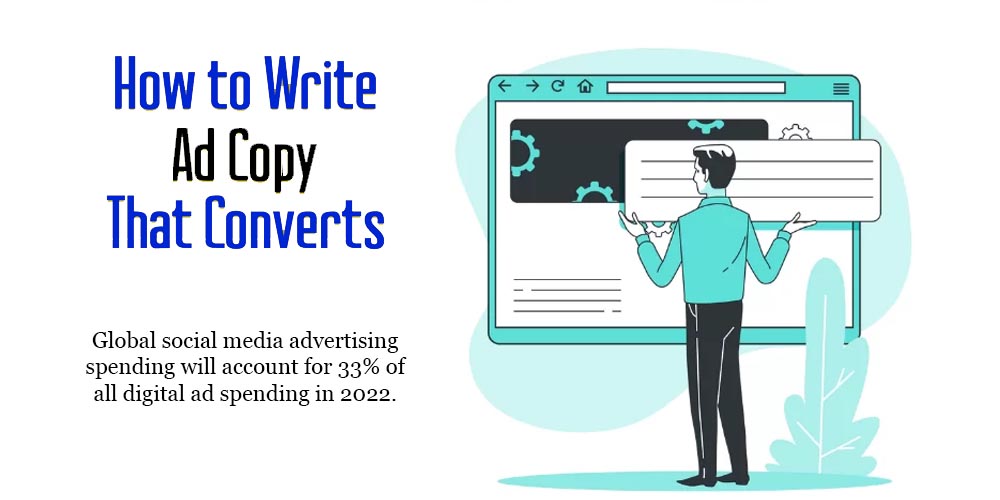
Every piece of content on the Internet has a reason for being. The most common types of copies you see online are blog posts, social media statuses, or product/service descriptions. However, all the advertisements you see when navigating the Internet also contain copies.
Ad copy is a subcategory of digital marketing and advertising with a final goal to encourage users to click on a particular ad. In general, Ads are an offer or a direct benefit that can be displayed on a landing page, search engines, billboard, social media publication, or other digital and physical places.
Ad Copy refers to writing content that attracts users to your website. But writing a successful Ad copy is not easy; it involves multiple factors and knowledge.
Advertising copywriting differs from traditional copywriting as it first seeks direct interaction and encourages people to purchase.
Why Should Your Marketing Campaign Consider Ad Copy?
Creating a good piece of digital advertising could be the difference between a successful digital marketing campaign and one and one that falls short of expectations. And just like any other marketing campaign, the main goal of an advertising campaign is to increase the conversion rate.
Of course, businesses have different objectives when using digital advertising. For example, if you have a small company or a startup, you may want to increase brand awareness or increase the number of visitors to see your product and services. You can also attract potential customers and generate leads.
Regardless of the final goals you define, Ad copy is crucial to create ads that provoke emotional responses and create a good impression among targeted audiences. Besides, ad copies are also relevant to leverage the budget and generate a good cost-per-acquisition rate.
Furthermore, working with skilled ad copywriters will facilitate the creation of strong digital ads that generate the expected reaction in readers and visitors. Once you’ve attracted desired clients to your landing page, you can provide all the information for clients to complete the process.
Some Techniques When Writing Ad Copy
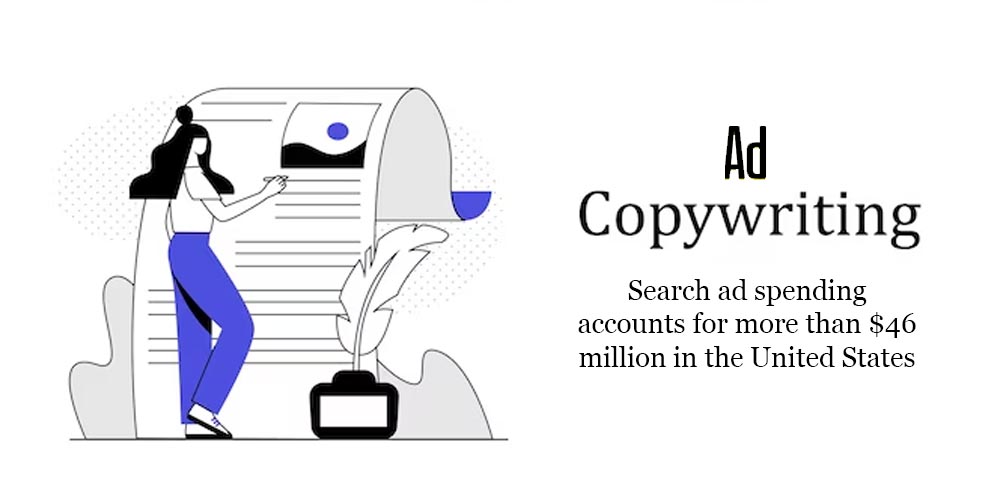
Writing compelling ad copies indeed brings key benefits to your business. Still, you must write ad copy that generates interest and emotional connection with the target audience. Some of the techniques you should not miss out on are the following:
- Compliments. This strategy works by mentioning that the reader knows a lot about your industry, product, or service. This way, you compliment them so they feel comfortable with your product or service.
- Discounts. This type of ad text is the most common and popular since it promotes limited-time offers, such as half off regular price or 2×1. These ads attempt to attract customers ready to complete a purchase.
- Cost savings. When promoting cost-savings, you state how your product or service can help the potential buyer to save money in the long term.
- Free trials. Potential customers love free trials since they can check all your product’s important features or data. Writing a proper ad copy promoting a free trial will entice potential buyers to test your offer.
- Influencer. When referring to sales copy, working with an influencer to create interesting ad copy can attract the audience’s attention. It might require a bit more budgeting, but mentioning that a particular influencer loves your product in your effective ad copy will entice prospects.
- Options. Very often, showcasing and explaining that your product boasts more options or customizable aspects than your competitors will attract a specific audience. In your next ad copy, make sure that you include what options your product offers.
- Scarcity. People love scarce products that are sold for a limited time. Besides, high-quality products that are in short supply are more valued by buyers. This way, when writing your ad, you can emphasize to the consumer that you have just a few products in stock and that they can lose their chance to acquire them.
- Testimonials. Including testimonials in your ads about using a specific product can convey a feeling of trust in your brand or product. Besides, it also can communicate value to consumers.
- Time savings. This strategy intends to communicate that your product can help customers to save time when doing their daily or professional activities.
Types of Ad Copy
Copywriters can create many different types of ads depending on your goals, interests, and budget. More common are the following.
Display Ads
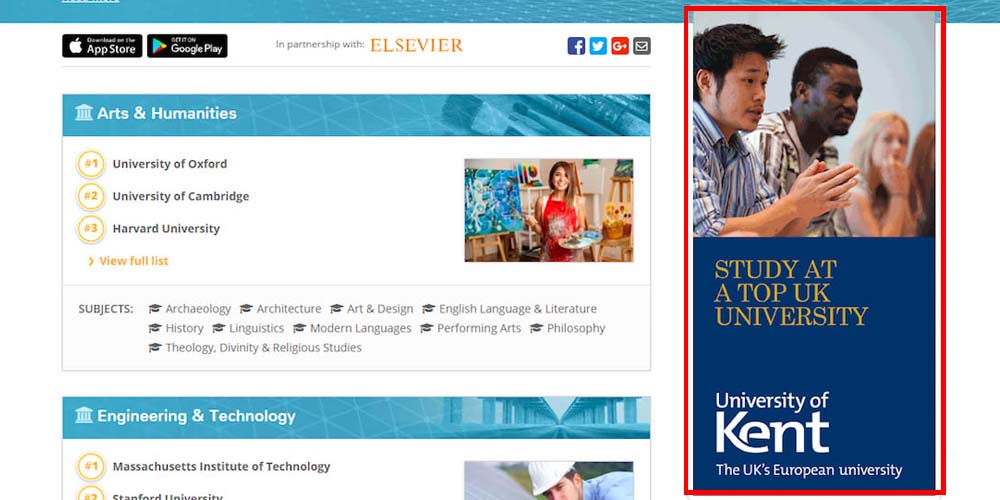
Display Ads are the most common type of ads you can find when navigating the Internet using Google and other search engines or entering websites. These correspond to banners and pop-ups appearing on different spots of websites, blog posts, and media publications, generally at the top and the side of the page. Display ads can include images or videos, text, and a button to lead directly to the landing page of your website.
Social Media Ads

As its name suggests, social media advertisement is displayed on social media platforms like Instagram, Facebook, TikTok, LinkedIn, and Pinterest. Social media are commonly displayed at the site of the Wall, such as in the case of implementing a Facebook ad copy.
These ads allow you to aim at specific audiences and review their performance in real-time. Additionally, utilizing these ads enables you to track the source of your sales, empowering you to further fine-tune your marketing strategy.
LinkedIn Ad Example
Linkedin ads are excellent for keeping professionals interested in your brand’s products in the long term. When using LinkedIn ads, the idea is to provide different data about services that can be useful in the future.
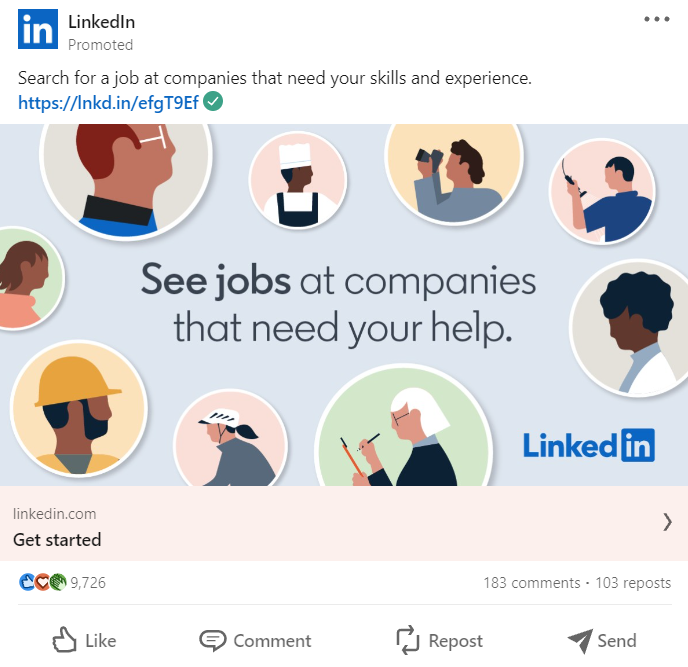
Instagram Ads Copy Examples
Instagram ads stand out as one of the most lucrative techniques to captivate targeted audiences. They effectively reach individuals interested in specific niches or products, while simultaneously boosting your brand awareness.

Facebook Ads Example
Meta ads do not differ too much from each other since they appeal to the same audience almost in the same way. As you can see in the image below, Facebook ads include the same elements, such as a header, a brief description, and a button to complete a process.

Native Ads
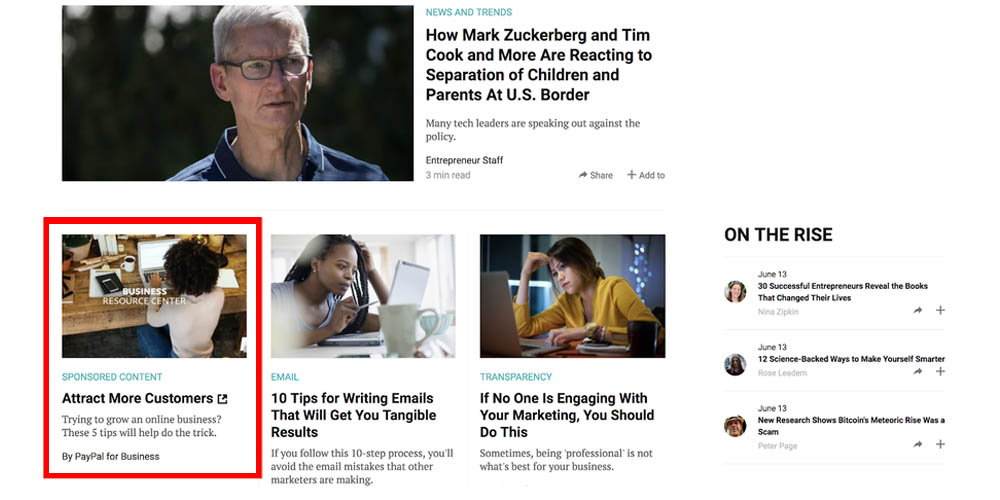
Native ads correspond to ads that look similar to all the other page content. This way, readers can get to know your product in a more natural way. Creating a copy of this type allows you to integrate different types of ads and not seem invasive. Native ads can take the form of both online and print advertisements.
Besides, native ads often address a similar topic to the rest of the publication to prevent disruptions in the UX. For instance, a beauty company can create a copy of how natural products and resources contribute to maintaining the environment.
Search Ads
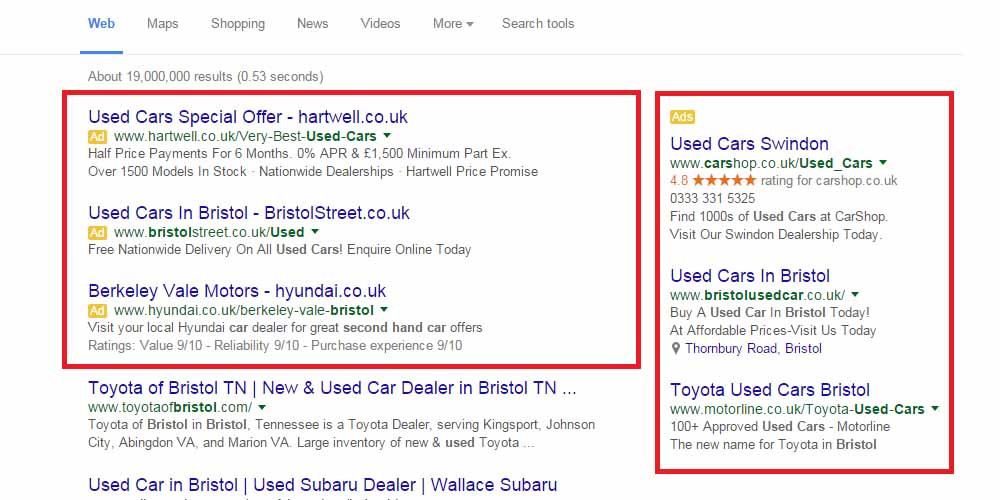
The search results in Google and other search engines feature some “special” results above the organic results, just like in the image above. These results correspond to paid search advertisements that businesses build using the right words to encourage potential customers to click the advertisement.
Contrary to the three types of advertising we saw above, search ads are only text and do not contain imagery. These focus on inserting a Call to Action to lead directly to the landing page.
Search ads are an integral part of SEM, or Search Engine Marketing, where you utilize strong keywords to create good advertising copy and an effective landing page to obtain a high-quality score from Google.
Email Campaign Ad Copy

Some of the best ad copy examples correspond to great emails that businesses send to previous customers and potential clients in their contact lists to offer them unique purchasing opportunities or subscribe to receive correspondence.
One of the strongest points of email copies is that these are not intrusive in the customer’s life; it’s up to clients to open your emails or not.
Email copies should contain relevant keywords for the readers, encouraging them to open the email and click a button you include in the message.
Traditional and Printable Ad Copy

These types of ads are typical in magazines, newspapers, flyers, and other printable media. Although you may not believe it, print advertising still is an important source of visitors and customers. These ads are better at attracting specific customers (for example in industry-specific newspapers), although they can be a bit more expensive than online ads.
Video Ads

Video advertising is likely the most popular type since millions of users watch Youtube and other streaming platforms, such as Twitch, daily. Still, you can witness different types of video ads when watching streams, live, or any video.
- Skippable in-stream ads. These correspond to ads you can skip after waiting five seconds or more.
- Non-skippable in-stream ads. Short ads you cannot skip. These usually last ten or fifteen seconds.
- In-feed video ads. Ads appearing in the feed – the column at the right of the screen. These look like any other video.
- Bumper ads. Ads no longer than six seconds that appear before, during, or after another video.
- Outstream ads. These correspond to mobile-only ads running on Google video partners.
Billboard Ad Copy
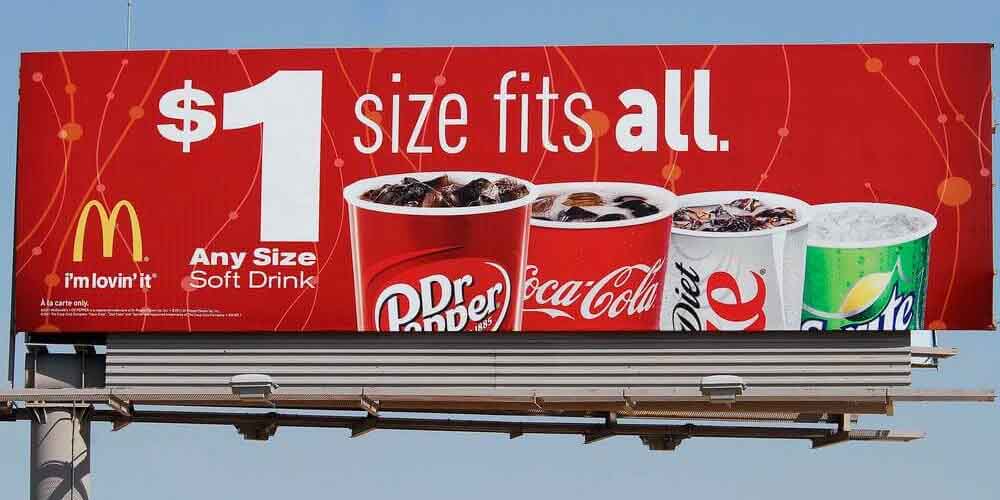
Like in printable and traditional ads, many big and small businesses still pay to publish their products on the street using billboards. These ads aim at ideal customers in a particular geographic location, which may lead to more conversions in the long term or increase brand awareness. Of course, billboards are not part of a pay-per-click marketing strategy, but still, it’s one you should consider if you have the budget.
Advertising Copy Best Practices
Regardless of the talent and professionalism of the copywriter, there are different techniques to enhance the results of ads.
Know Your Target Audience
Every excellent marketing strategy starts by knowing to whom you want to sell your products or services. The strategies you choose to implement and the type of ad you create will depend on this factor.
For instance, if a gaming studio is looking to promote a particular video game, it will probably attempt to entice males between the ages of eighteen and forty, single and with average purchasing power. And this is even more crucial whether the game is a shooting or a fighting game.
Your strategy appeals directly to these target audiences by providing essential information about the product and top keywords.
Know Your Direct Competitors
The Internet is full of brands offering a product similar to yours. You should study their ads and how they promote them. Read their copies, study the keywords, check the images they use, and to build your own. Competitors’ ads can be a great example for your new ads.
A good example is a gaming company checking how other studios promote their games or products on their websites, landing pages, and ads. Very often, imitating styles and resources is a good idea.
Describe the Product’s Benefits in Detail
Ads have the task of directly communicating advantages and benefits when clicking them and acquiring a specific product or leveraging an offer. In this sense, it’s important to know that ads need three constituent parts: the headline, the body copy, the image, or the action button.
The header should describe the product, its most important benefit, and how it can solve a specific problem. In the body copy, consider using emotional triggers when describing features and how the product will solve the problem. Lastly, include an eye-catching image that resumes the message and impresses the reader.
If your goal is to promote a new video game, remark on the name, and genre, briefly describe its gameplay and its strong points, and include an outstanding image to generate interest in your potential consumers.
For Instance, Sandbox Interactive often promotes Albion Online through Youtube, using skippable in-stream ads in which the studio mentions crucial features of the game.
Appeal to Pain Points
A well-designed ad should address customers’ pain points and communicate how it will solve them. The ideal customer has a clear issue or needs and intuitively knows what product would solve them. Thus, advertisers should focus on meeting the needs of their audience and clearly articulate the benefits of their products or services.
In this regard, Grammarly publishes ads in several media to highlight how its service improves writing orthographically and grammatically.
Include a Direct CTA – Call to Action
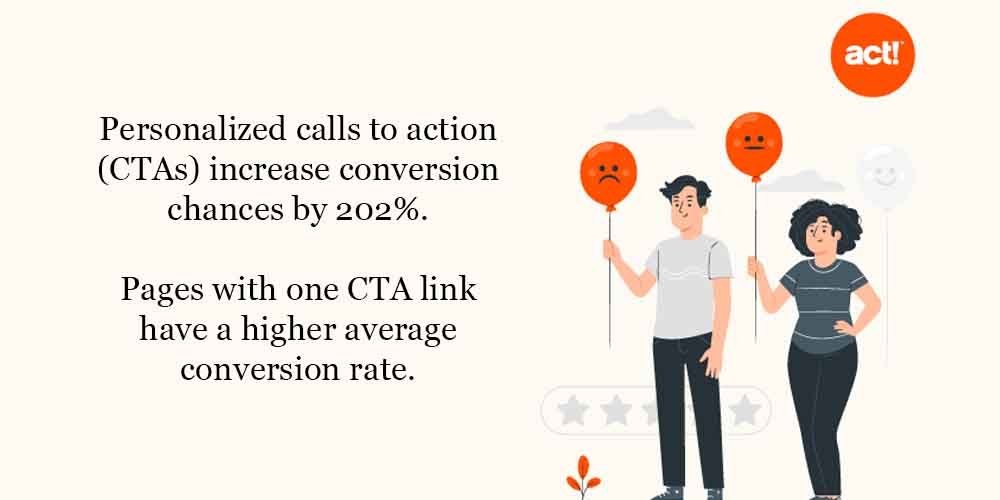
Ads have as a final goal to sell a product or service. So, do not be ashamed of calling to action by directly addressing the ideal customer. To do this, use action verbs and phrases that invite the reader to click the ad. For instance, you can use the phrase “To leverage this limited-time offer, click here” or “To enter the early access, head to our website and subscribe to our website.”
Most display ads contain a CTA phrase and button inviting potential customers to click the ads immediately.
Include Data and Numbers
When writing your ad, try going into more detail. What do we want to say about this? We mean including data and numbers that can clarify a particular aspect of your product or even highlight why your offer is unique. Percentages and numbers can help you write a persuasive copy that impacts the market.
Addressing Grammarly ads again, in its advertisements, the company highlights how over 20 million users regularly use the platform.
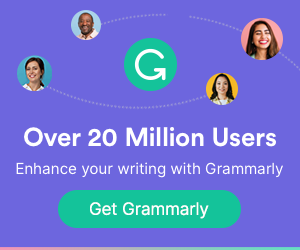
Utilize Action Words
This point is directly related to the usage of a CTA. An action verb can be the difference between clicking on your ad or scrolling it through. Most people tend to click an advertisement when they read an action word inviting them to be part of something special or describing a sense of urgency. A good example is a business publishing a “Click now and get your offer” ad.
Keep an Eye on the Design
One of the most common objections potential customers raise when encountering ads is that the advertisements lack attractiveness or visual appeal. Graphic design and ad copywriting are essential to building a creative advertisement that stands out over other companies ads.
Keep an eye on the color palette, the fonts you utilize, the size of letters, images, the CTA button, etcetera. The total design of your ads should reflect your general intention and concept of your product. Headlines should also be outstanding.
Talk to Customers Directly

It’s important to hear and talk to potential customers and appeal directly to their sensations, feelings, memories, and issues to increase conversion rates. A skilled advertiser knows exactly what keys to play to let people choose their product over others. Use a laconic approach, frugal language, and simple references.
A good example is Candy Crush’s advertisements, where the creatives use “Play the Sweetest Game” to entice prospects looking for relaxing and sweet gaming.
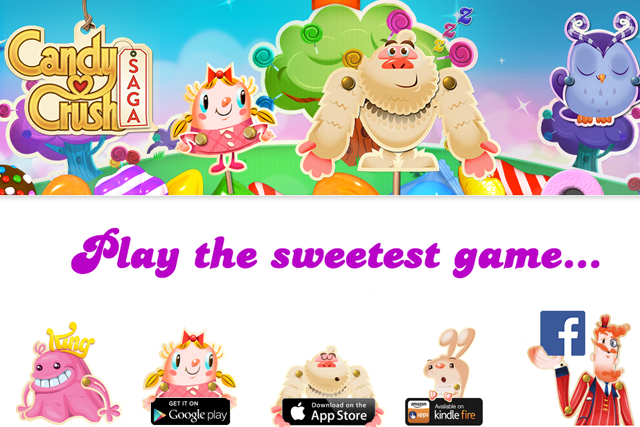
Take Advantage of FOMO
FOMO stands for Fear of Missing Out. You should leverage the necessity of the clients to feel part of something unique, to stand out from other regular customers. FOMO is great for customers to take action, especially when leveraging limited-time offers. When you build your ads, you should advertise that your product or offer only has a few copies. Besides, highlighting reviews or customer feedback is a great technique when using FOMO to show customers that urgency is real.
As we mentioned early, the typical phrase “Get this 48-hours-offer” or similar may encourage prospects to follow the ad.
Measure Results and Adjust Your Digital Ad Copy
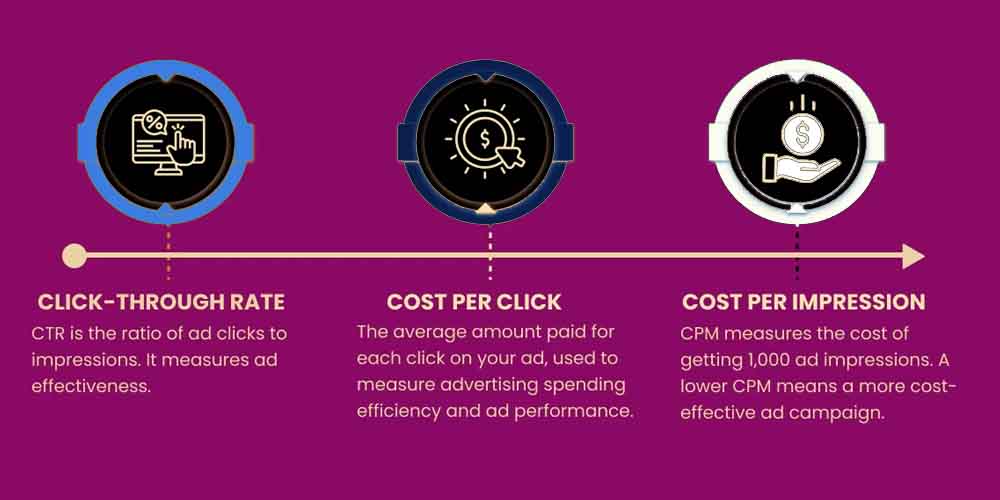
Once you’ve published your ads, you must continuously measure how ads work and if they fulfill your expectations. There are different KPIs you can use to measure results. We personally recommend Cost-per-Click, Click-Through Rate, Cost-per-Impression,and Return-in-Investment.
If you notice that ads are not responding as you want, you can modify them, changing the header, the entire copy, rebuild the call-to-action, etcetera.
KISS
Kiss – Keep it Simple, Stupid – is a design principle. Still, you can apply it when copywriting your ads to engage prospects and encourage them to click your ads easily. No matter whether you include short stories about why your product is indispensable for customers or why clicking the ad is an important step in correcting their needs, just KISS!
Summing It Up
Ad copywriting is more an art than a science. The only way to improve your copywriting skills and build excellent content is by practicing the tips mentioned in this article. Whether you have a beauty company or a video game studio, the same principles apply to all businesses.

A PPC specialist who started with organic social media. For several years, the core of his activities are:- Google Ads, Microsoft Ads, Meta Ads, TikTok Ads, Twitter Ads, Linkedin Ads. He has led campaigns with a global reach, e.g. for FootballTeam, G2A, ETOTO, as well as many smaller campaigns in the sports, construction and financial industries. Has full focus on ROAS. Privately, a fan of football, history of wars and Star Wars.

